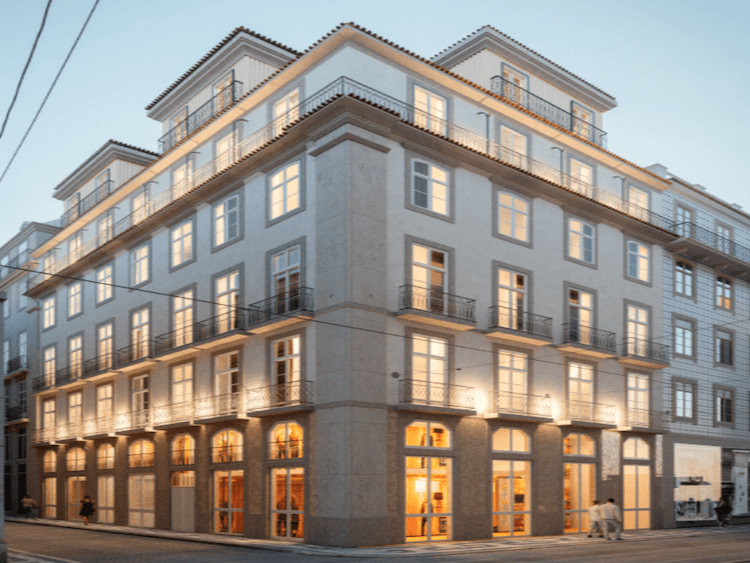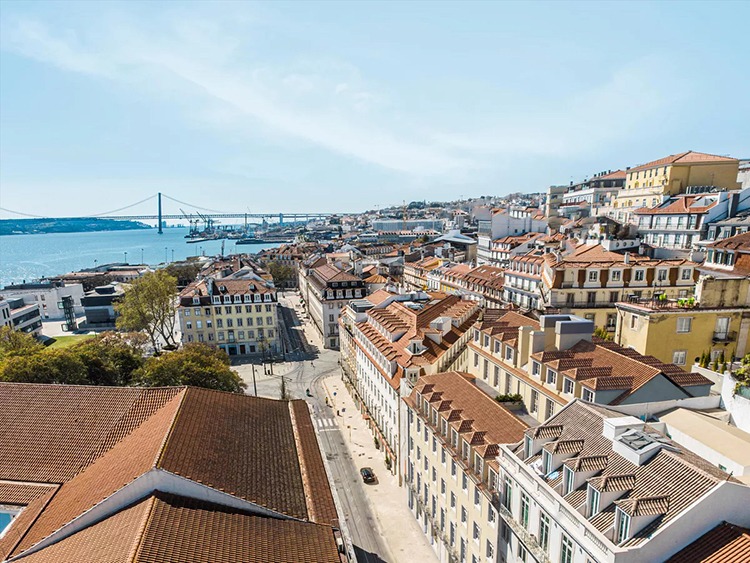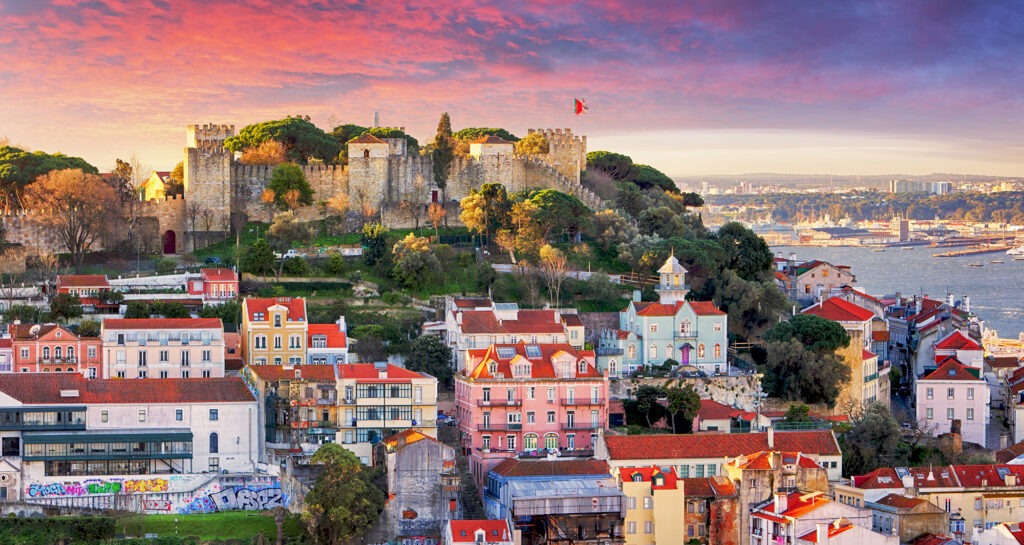The Baixa district was entirely rebuilt by the Marquis of Pombal after the Great Earthquake of 1755, with streets flanked by uniform and neoclassical buildings. It was the first great example of neoclassical design in Europe and one of the finest European architectural achievements of the age. Today, Baixa is also full of shops and restaurants and is always bustling with life day and night.
Baixa is an incredible fusion of history, traditional Portuguese culture and modern tourism. Along with Rossio next door, these two neighbourhoods make up the lower city of Lisbon (baixa translates to ‘low’ in English), where you will find the following things to see and do:
Praça do Comércio
Undoubtedly one of the highlights of the capital! This beautiful square overlooks the River Tagus and perfectly reflects the wealth and ambitions of Portugal at the end of the 18th century. It is today one of the first places tourists see when visiting Libson. It is also where many concerts are held, and where locals stroll whilst enjoying a wander along the river.
Sip a cocktail, enjoy a meal at one of the surrounding restaurants, visit the Lisbon Story Center, or take photos next to the statue of King Joseph I.
Rua Augusta
Praça do Comércio opens through the triumphal arch onto Rua Augusta: the bustling main street of Baixa, with a colourful mix of traditional restaurants, shops and open-air cafes.
This emblematic road characteristic of an older Lisbon is ideal for seeing street artists, enjoying Pombaline architecture and discovering a few landmarks.
Elevador de Santa Justa
Another architectural masterpiece is the Elevador de Santa Justa, a historic lift designed to help locals navigate the hilly streets of Lisbon. This superb structure was built in 1902 by the Portugal-born French architect Raoul de Mesnier du Ponsard (an apprentice of Gustave Eiffel) to connect downtown to Bairro Alto (the lowest and highest points of the city).
It was inaugurated as one of the public transport systems on the 10th of July 1902 and was named Elevador do Carmo. Today, tourists can ride it for a small fee, and its observation deck offers incredible viewpoints.

Rossio Train Station
The Rossio Train Station, completed in 1888, is a stunning example of Manueline and Romantic architecture, located between Rossio and Restauradores squares. Not only is it a historical and lovely monument, but it is also the primary way to reach Sintra (a charming Portuguese town situated within the hills of the Serra de Sintra, hidden in its majestic pine forest).
Archaeological Sites & Ancient Tunnels
Baixa is also home to a few underground treasures, namely the Núcleo Arqueológico (Archaeological Center) and the ancient Roman tunnels, both just a block away from each other.
Both are believed to date back to the 1st century AD. Although the Núcleo Arqueológico can be visited all year round, the Roman tunnels can only be entered during special weekends of the year.
A glass of Ginjinha
Trying Ginjinha in Lisbon is a travel must. Also known as Ginja, it is a sweet liqueur made from Morello (sour) cherries soaked in a distilled spirit called Aguardente, with a flavoured mixture of sugar and spices such as cinnamon.
There is no better way to break up your day of sightseeing than a glass of Ginjinha from its traditional home – A Ginjinha Espinheira. This bar is part of the ‘Lojas Com História’ (stores with history), first opened in 1840 by a Galician monk, and is one of the first bars to sell Ginjinha in Lisbon.
Get in touch today for more information on real estate opportunities in the Baixa district.






